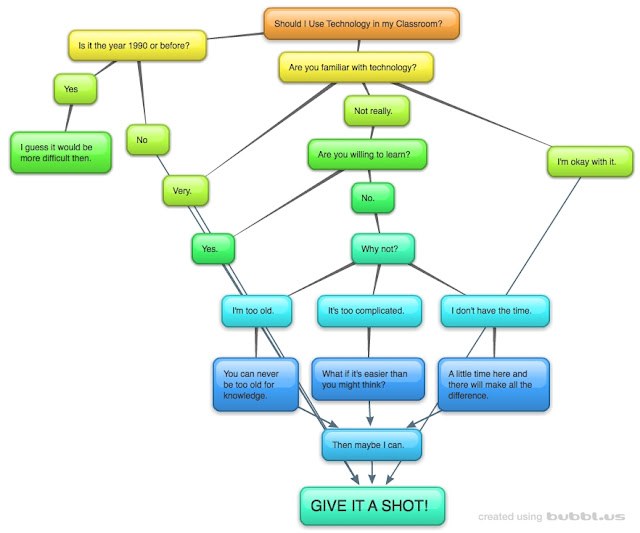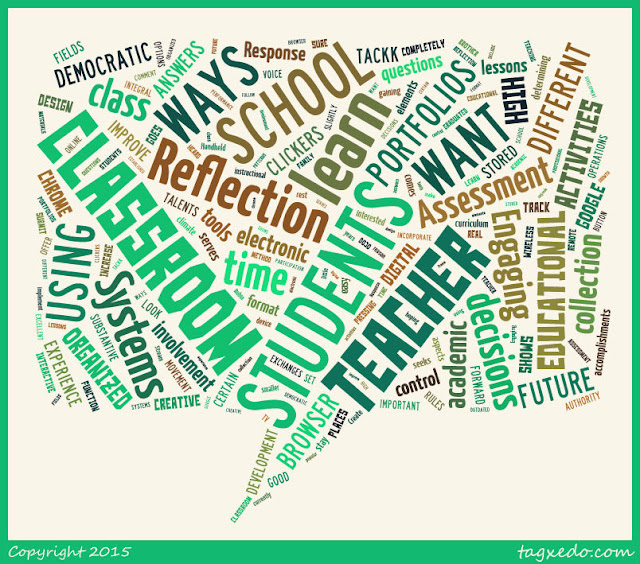I feel that our textbook throughout the semester was a
little unbalanced in favoring technology over more traditional methods in the
classroom. Even though I feel there could have been more debate over the
integration along with the information provided, there were chapters that did
discuss alternate stances. While it explained and spoke of the positive aspects
of technology incorporation in classrooms, it did not fail to include
negative/opposing views on the matter. When looking at any topic, I feel it is
important to look from all angles; otherwise the decision will appear biased.
Because of the format of our readings, some chapters provided sole information
on technology options, while others remembered to include other viewpoints on
the matter. However, I feel that even though technology is still debated today,
that it is worth trying and in the end it will be worth the effort.
I must admit, I’ve never liked group projects. They require
you to work with unknown possibilities and possible slackers. When it comes to
these, especially when their online, it becomes harder for those involved to
communicate effectively. However, this semester proved otherwise due to the
fact that the majority of people in the group fought to keep in touch with one
another and relayed information and work progress swiftly. Not only that, but
the way the assignments were set up, each person was still responsible for
their own work, which eased the stress of possible failure due to an outside
party. I have to say, the fellow work I saw put into those projects was pretty encouraging
and gave me hope for any future group projects.
I admit that I liked the idea of responding to a classmate’s
discussion post. However, it was rare to see a comment receive a response and
allow the conversation to continue. I understand sometimes we as students want
to get our assignments completed and turned in, never to look at them again,
but being able to dive into an intellectual discussion would have been great. I
did notice one or two classmates would go back and forth from time to time, but
to see more of an interaction among different viewpoints would have been
inspiring.
In conclusion, during this semester I have been able to feel
both positively and negatively about the subject of technology in teaching.
Certain topics or approaches I did not necessarily agree with, while others
seemed like great ways to interact with students and materials. Throughout this
learning process, I had to remind myself that everyone has their own style of
teaching, and what may not appeal to me would likely be gold to someone else.
Although I may not be that creative, this course was able to show me simple
ways to make any assignment or lesson more imaginative and personal. Instead of
writing a plain essay, or turning in a standard worksheet, creating a blog or
website filled with ideas, feedback, and personal growth seems like a great way
to make any writing assignment more fun and artistic. I must admit this class
has humbled me and altered the mindset I originally had about technology in the
classroom. I now understand there needs to be a balance to everything, but that
technology is inevitable and in so many ways reaches students in ways that
traditional methods just couldn’t measure up to.

Just a little thought to leave you with: Technology is definitely a fascinating tool that with time can only move forward and become more advanced. Even though we may not exactly be there yet, I would like to you to see the possibilities of technology in future classrooms.
Resources
Goshay, N. (2015, December 10). Technology? [JPEG] Created
with bubbl.us
Goshay, N. (2015, December 10). When the Semester is Over.
[JPEG] Created with Bitstrips https://www.bitstrips.com/user/F2TP8S/read.php?comic_id=GJZQK&subsection=1
Maloy, R., O'Loughlin, R., Edwards, S., & Woolf, B.
(2014). Transforming Learning with New Technologies. 2nd Edition. Boston, MA:
Pearson Education Inc.
Nemroff Pictures (2014, January 28). Technology in Education:
A Future Classroom. Retrieved December 10, 15 from https://www.youtube.com/watch?v=uZ73ZsBkcus




